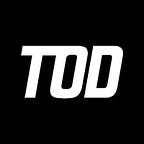Isuzu launches the D-Max pick up starting at Rs 5.99 lakh
Isuzu Motors India Pvt. Ltd. (IMI) has officially launched their D-Max pick-up truck in three trims starting from Rs 5.99 lakh for the lowest single cab variant, going up to Rs 7.09 lakh for the top-of-the-line Space Cab with an arched deck. The mid-trim D-Max comes with more cabin space (Space Cab) and a flat deck for additional loading space and is priced at Rs 6.19 lakh ex-showroom Mumbai. The D-Max pick-up truck is sold globally and enjoys significant market share in the commercial vehicle segment in those markets.
The Japanese commercial vehicle manufacturer is known the world over for developing resilient and fuel efficient diesel engines and the D-Max is endowed with Isuzu’s now famous four-cylinder 2.5-litre CRDI turbo-diesel mill developing 134bhp at 3600rpm and 294Nm of torque between 1800–3200rpm. The BS4 compliant engine is mated to a five-speed manual and delivers power to the rear wheels. Isuzu claims that the pick-up truck will be able to carry a payload of over 1-ton quite easily, making it quite a handy CV. The engine may seem a little under-powered for the heavy gross weight (2850kg) it has to pull but Isuzu claims that the motor has been tuned for low-end grunt and fuel efficiency. The large 76 litre fuel tank will enable the pick-up to have a more than decent range.
Inspired by the king of the jungle, Isuzu has designed the D-Max to look rugged yet comfortable. The front grille especially takes after a lion’s fang-filled grin though the lower variants miss out on the chrome. The ORVMs on the top-spec Space Cab also get a chrome finish highlighting the premium image of the pick-up. The lower-spec trims miss out on the body coloured bumpers, chrome-finished ORVMs and chrome grille but still manage to look intimidating. The 15-inch steel wheels somehow offer a bland look and a lifestyle product should get alloy wheels and prominent fog lamps to complete the look.
On the inside, all three variants look more or less the same but the Space Cab trim offers more space (and a slightly smaller deck), and power windows. The seats and interior quality levels are not unlike that found in a passenger car worth Rs 5 lakh which is definitely a plus.
Isuzu’s current dealership network is concentrated in the south of the nation though with the opening of the Mumbai dealership, they have planned to expand into Delhi, Vishakhapatnam, Nasik and Pune soon. While the total number of outlets at the moment is nine, Isuzu is looking to have 60 outlets under its belt by 2016. Shigeru Wakabayashi, Executive VP and Deputy MD, IMI has intimated that their current focus in the Indian market is to expand on their dealership network.
The CV maker is targeting ‘captive customers’ like people in the manufacturing, engineering, construction, agriculture, and retail business in addition to small business owners with their D-Max. When asked if Isuzu would branch out to make the D-Max a lifestyle product, Takashi Kikuchi, President and MD IMI said, “The Space Cab variant is the lifestyle product. We are not planning on going for anything bigger or offering more with this product.”
Isuzu ventured into India in 2012 and within 6 months started selling its MU-7 SUV via the CKD route. After signing a Memorandum of Understanding with the Andhra government in March 2013, the Japanese manufacturer has started to build a 107 acre LCV manufacturing facility in Sri City near Chennai. The factory will commence operations in 2016 and will have an initial production capacity of 50,000 units per annum with a maximum capacity of 1.2 lakh units a year. Isuzu has announced that they have invested Rs 3,000 crore in the facility which will enable 100 per cent parts localisation to keep costs low and will employ up to 3,000 people. The facility will also be used as a hub to manufacture export only vehicles for international markets.
The renowned truck maker has contracted Hindustan Motors Limited (HML) to manufacture the MU-7 and the D-Max though as the HML facility’s production capacity is just 500 units per month, the manufacturer is planning to sell 300 units of the D-Max and 200 units of the MU-7.
